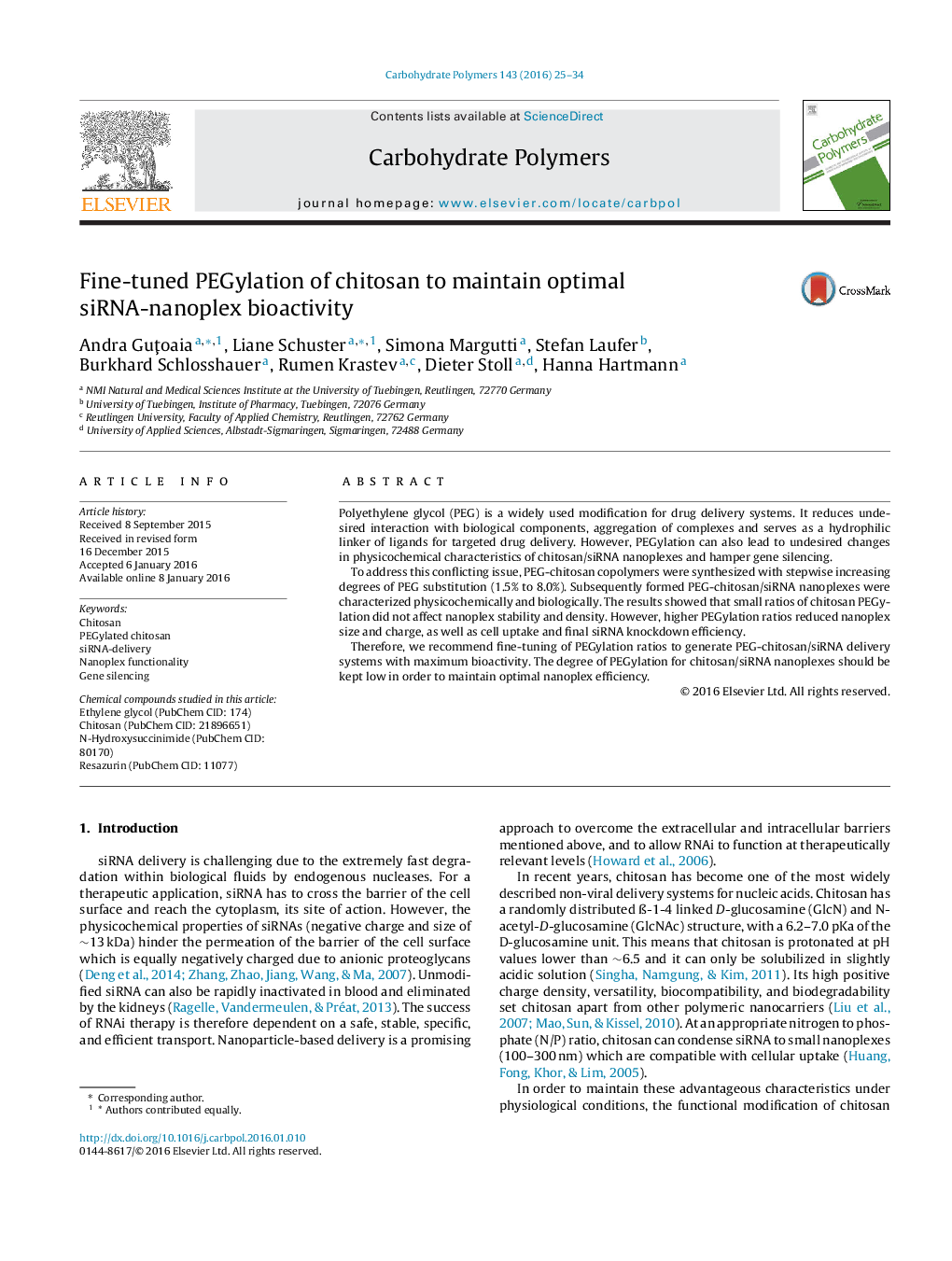| کد مقاله | کد نشریه | سال انتشار | مقاله انگلیسی | نسخه تمام متن |
|---|---|---|---|---|
| 1383338 | 1500615 | 2016 | 10 صفحه PDF | دانلود رایگان |

• Chitosan/siRNA nanoplexes can be modified with defined degrees of PEG.
• PEG has little influence on physicochemical characteristics of nanoplexes.
• PEG has strong influence on biological function of nanoplexes.
• Biological functionality cannot be predicted only from physicochemical studies.
• Degree of PEG grafting has to be fine-tuned and verified in biological systems.
Polyethylene glycol (PEG) is a widely used modification for drug delivery systems. It reduces undesired interaction with biological components, aggregation of complexes and serves as a hydrophilic linker of ligands for targeted drug delivery. However, PEGylation can also lead to undesired changes in physicochemical characteristics of chitosan/siRNA nanoplexes and hamper gene silencing.To address this conflicting issue, PEG-chitosan copolymers were synthesized with stepwise increasing degrees of PEG substitution (1.5% to 8.0%). Subsequently formed PEG-chitosan/siRNA nanoplexes were characterized physicochemically and biologically. The results showed that small ratios of chitosan PEGylation did not affect nanoplex stability and density. However, higher PEGylation ratios reduced nanoplex size and charge, as well as cell uptake and final siRNA knockdown efficiency.Therefore, we recommend fine-tuning of PEGylation ratios to generate PEG-chitosan/siRNA delivery systems with maximum bioactivity. The degree of PEGylation for chitosan/siRNA nanoplexes should be kept low in order to maintain optimal nanoplex efficiency.
Journal: Carbohydrate Polymers - Volume 143, 5 June 2016, Pages 25–34